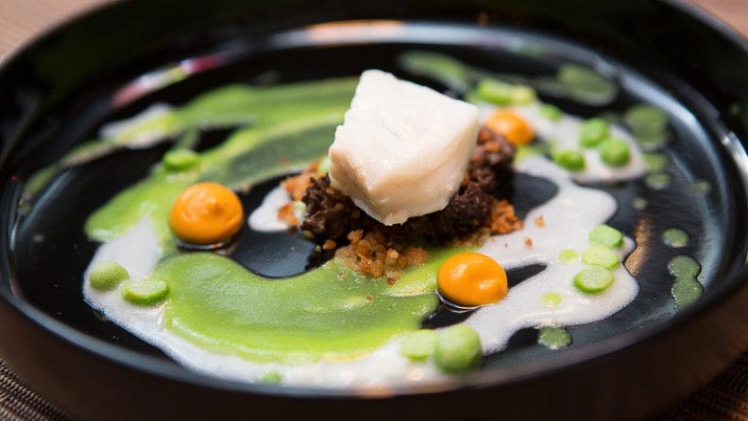Food and drink are more than just necessities; they are integral parts of human culture and an endless source of fascination. From the flavors and textures that dance on our taste buds to the rituals and traditions that surround mealtime, the world of food and drink is a rich tapestry of diversity and complexity. In this article, we will embark on a gastronomic journey, exploring the significance of food and drink in our lives and celebrating the culinary wonders that bring joy to our palates.
Section 1: The Pleasure of Gastronomy
The pleasure derived from food and drink is a universal human experience. Here’s why it is so significant:
1.1. A Feast for the Senses: Food and drink engage all our senses. The aroma of freshly baked bread, the vibrant colors of a fruit platter, the sizzle of a steak on the grill, the taste of a rich chocolate dessert—these sensory experiences make dining an art.
1.2. Cultural Connection: Exploring diverse cuisines allows us to connect with cultures and traditions from around the world. Every dish tells a story, revealing the history, values, and identity of a community.
1.3. Social Bonds: Sharing meals with family and friends strengthens social bonds. Whether it’s a simple family dinner or a grand celebration, food and drink bring people together, fostering connections and creating lasting memories.
Section 2: Culinary Delights from Around the World
Our culinary journey takes us to various corners of the globe, where we’ll savor the unique flavors and dishes that define each region.
2.1. Italian Cuisine: The Art of Simplicity
Italian cuisine is celebrated for its simplicity and emphasis on high-quality, fresh ingredients. Dishes like pasta carbonara and Margherita pizza showcase the beauty of uncomplicated flavors.
2.2. Thai Cuisine: A Symphony of Flavors
Thai cuisine is renowned for its harmonious blend of sweet, salty, sour, and spicy flavors. Pad Thai, Tom Kha Gai soup, and Green Curry exemplify the complexity and balance of Thai dishes.
2.3. Indian Cuisine: A Spice Odyssey
Indian cuisine is a kaleidoscope of flavors, colors, and spices. From fiery curries to fragrant biryanis, India’s culinary landscape offers a rich tapestry of taste experiences.
2.4. Japanese Cuisine: Artistry on a Plate
Japanese cuisine is a testament to culinary artistry. Sushi, sashimi, and tempura are not only delicious but also exquisitely presented, reflecting Japan’s emphasis on aesthetics.
2.5. Mexican Cuisine: A Fiesta of Flavors
Mexican cuisine is a celebration of bold, spicy, and hearty flavors. Tacos, enchiladas, and guacamole showcase the country’s vibrant culinary traditions.
Section 3: The World of Beverages
While food is a gastronomic delight, beverages play an equally vital role in our culinary experiences. Let’s explore the diverse world of drinks:
3.1. Coffee: The Global Pick-Me-Up
Coffee is a beloved beverage enjoyed worldwide. From espresso in Italy to Turkish coffee in the Middle East and café au lait in France, it’s a cultural staple that provides a caffeine kick and comfort.
3.2. Tea: A Timeless Tradition
Tea has a rich history and is deeply ingrained in many cultures. From English afternoon tea to Chinese tea ceremonies, it offers a spectrum of flavors and rituals.
3.3. Wine: Elegance in a Glass
Wine is more than a beverage; it’s a symbol of sophistication and refinement. Wine regions like Bordeaux, Napa Valley, and Tuscany produce some of the world’s finest vintages.
3.4. Craft Beer: Brewing Creativity
Craft beer has experienced a global resurgence, with microbreweries and craft brewers experimenting with flavors and styles, providing beer enthusiasts with an array of choices.
3.5. Cocktails: Mixology Magic
Cocktails are a blend of art and science, with mixologists crafting imaginative concoctions that tantalize the taste buds. Classic cocktails like the Martini and Mojito remain timeless favorites.
Section 4: Food and Drink as an Expression of Identity
Culinary preferences often reflect our identities and values. Here’s how:
4.1. Regional Identity: Different regions within a country are known for specific dishes or ingredients, contributing to regional identity and pride. For example, gumbo in Louisiana and poutine in Quebec.
4.2. Dietary Choices: Vegetarianism, veganism, and other dietary choices are often driven by personal values, ethics, or health considerations. They reflect an individual’s identity and commitment to specific principles.
4.3. Cultural Heritage: Immigrants often bring their culinary traditions to their adopted countries, preserving their cultural identity through food. Dishes like sushi in the United States or kebabs in Europe are examples of culinary fusion.
Section 5: The Future of Food and Drink
The world of food and drink is constantly evolving, with new trends and innovations reshaping our culinary landscape. Here’s a glimpse into the future:
5.1. Sustainable Dining: Sustainability is a growing concern, and consumers are increasingly seeking eco-friendly and ethically sourced food and drink options.
5.2. Fusion Cuisine: As global travel and cultural exchange continue to flourish, fusion cuisine will likely become more prevalent, creating exciting cross-cultural culinary experiences.
5.3. Technology Integration: Technology, such as food delivery apps and smart kitchen appliances, is revolutionizing how we access and prepare food and drink.
5.4. Health and Wellness: The trend toward healthier eating is likely to continue, with a focus on functional foods and ingredients that promote well-being.
Section 6: Conclusion
Food and drink are not mere sustenance; they are a source of joy, culture, identity, and connection. Our culinary adventures take us on a journey around the world, celebrating the flavors and traditions that enrich our lives. As we look ahead, the future of food and drink promises even more exciting discoveries and innovations. So, let us continue to savor each bite and raise a glass to the endless possibilities that the world of food and drink has to offer.


